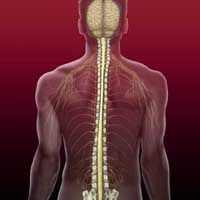Using Electrical Pulses to Treat Parkinson's Disease Pain
Electrical pulses targeting the dorsal column were effective in treating Parkinson's disease-like symptoms in mice.

Long-term spinal cord stimulation can stall symptoms of diseases similar to Parkinson’s, according to research published in Scientific Reports.
Researchers from Duke Medicine built upon their earlier research — which found that electrical pulsations can temporarily ease the symptoms of mice’s neurological disorders – in order to target the loss of dopamine production in the brain. Dopamine is an essential brain molecule that affects movement, muscle control, and balance. L-dopa is a standard drug treatment used for Parkinson’s disease, and works to replace dopamine in the brain. However, its side effects and loss of effectiveness over time sparked the researchers’ interest.
“Finding novel treatments that address both the symptoms and progressive nature of Parkinson’s disease is a major priority,” said the study’s senior author Miguel Nicolelis, MD, PhD, in a press release. “We need options that are safe, affordable, effective, and can last a long time. Spinal cord stimulation has the potential to do this for people with Parkinson’s disease.”
Less than 5 percent of Parkinson’s disease patients qualify for deep brain stimulation treatment, despite its merit as a valuable therapy.
“Even though deep brain stimulation can be very successful, the number of patients who can take advantage of this therapy is small, in part because of the invasiveness of the procedure,” Nicolelis said.
In 2009, the researcher team developed a device that produces electrical stimulants in an animal model’s dorsal column. The mice had depleted dopamine levels, which mimicked the symptoms of Parkinson’s disease, but when the device was turned on, the mice displayed healthy behaviors. For this study, the investigators delved into long term treatment with the device.
Over the course of 6 weeks, pulses were delivered to the mice’s dorsal column twice weekly for 30 minute sessions. The mice demonstrated significant improvement, including motor skills and a reversal of severe weight loss. Better survival of neurons and a higher density of dopaminergic innervations in brain regions that cause Parkinson’s disease in humans were also noted. The researchers extrapolated that the treatment can protect against the loss or damage of neurons.
Currently, researchers believe chronic pain can be managed in humans with similar devices. By using electrodes implanted over the spinal cord, a tingling sensation is produced to temporarily relieve pain. Prior literature from researchers worldwide has also demonstrated that targeting the dorsal column in humans could be an effective way to bring back motor function in Parkinson’s disease patients.
“This is still a limited number of cases, so studies like ours are important in examining the basic science behind the treatment and the potential mechanisms of why it is effective,” Nicolelis concluded.